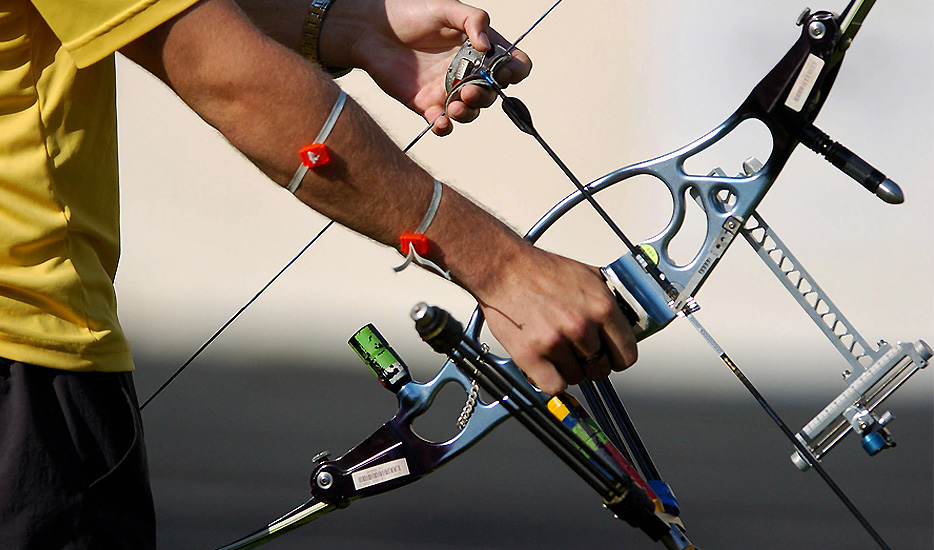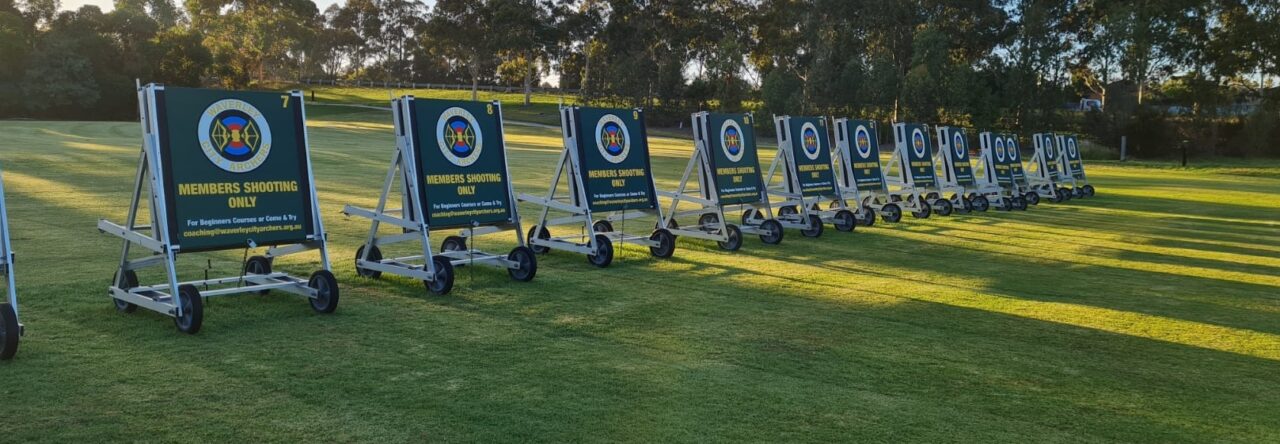What is the difference between a Traditional Recurve and an Olympic Recurve?
The Olympic Recurve is the only type of bow permitted to be used at the Olympic Games.
Where Traditional Recurves are used more to achieve tight groupings of arrows, Olympic Recurves are used to ensure consistent accuracy and precision of arrows to hit the centre of a target. This is important because Olympic archery is scored to the millimetre.
The main differences between an Olympic Recurve and a Traditional Recurve involve the use of Sights, Stabilisers and Clickers. Olympic Recurves are also higher-quality and higher-performance compared to Traditional Recurves.

An Olympic Recurve Bow with a sight, clicker and three stabilisers.
A sight provides a point of reference to help an archer aim a bow accurately at a target, while also compensating for a tendency to either shoot high or low.
Sights are generally used on a Traditional Recurve. A Recurve without a sight is NOT an Olympic Recurve.
A stabiliser is a weighted pole that makes a bow heavier and changes the balance point of the bow, making it less prone to movement or disturbance. This ensures accuracy and precision when a Recurve is shot, vitally important in Olympic archery.
Stabilisers can be used on a Traditional Recurve. A Recurve without a stabiliser is NOT an Olympic Recurve. A Traditional Recurve generally uses one stabiliser, while an Olympic Recurve uses three stabilisers.
Clickers are used to ensure arrows are drawn to the correct anchor point to maintain consistent draw length, which ensures consistent shooting to achieve that perfect shot.
Traditional Recurves are usually made of wood, or laminated wood, or a combination of materials including wood (the riser) and carbon fibre (the limbs). Olympic Recurves are generally made from carbon fibre (riser and limbs).
© 2023 Waverley City Archers Inc.
